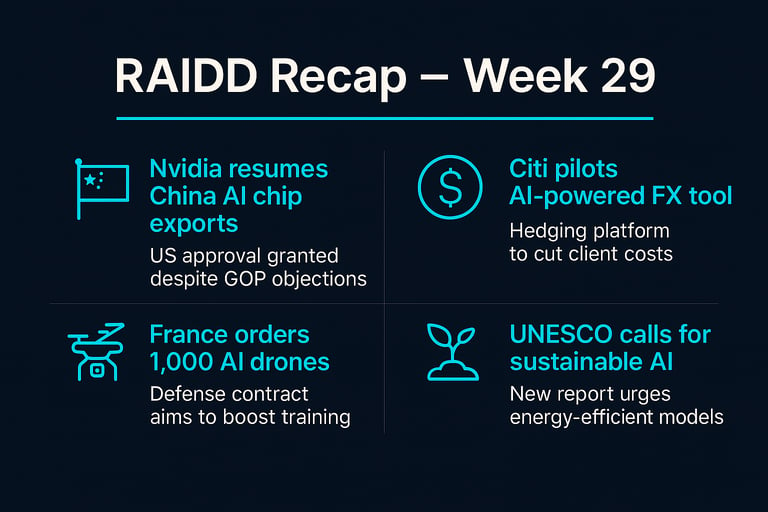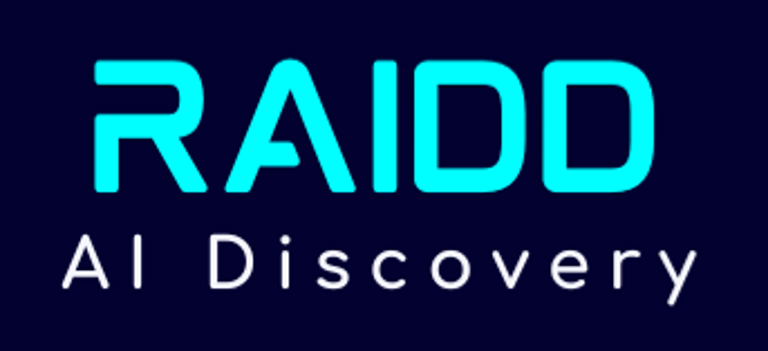RAIDD Recap – Week 29
Nvidia resumes China chip exports amid GOP concerns, Citi pilots AI-powered FX tool, France orders 1 000 AI drones, UNESCO urges sustainable AI models, and Lendbuzz automates over half of its loans.
RECAP


🇨🇳 Nvidia wins approval to resume China AI chip exports
Nvidia has received U.S. government clearance to export its powerful H20 AI GPUs to China, a decision tied to rare-earth materials negotiations. The move reversed April restrictions and boosted Nvidia’s stock. However, top GOP lawmaker Rep. John Moolenaar cautioned that it may strengthen Chinese military and AI capacity, illustrating ongoing geopolitical sensitivities around AI hardware exports.
Read full article
💱 Citi and Ant International roll out AI FX hedging pilot
Citi and Ant International unveiled an AI-based foreign exchange risk hedging platform in Singapore, using machine learning to forecast FX shifts and recommend protective strategies. In a pilot with a major airline, it purportedly slashed hedging costs by around 30%. The trial highlights AI’s growing impact on financial risk management across industries.
Read full article
🇫🇷 France orders 1 000 AI-equipped micro-drones for training
France’s Ministry of Defence awarded a multimillion-euro contract to Harmattan AI for 1 000 autonomous micro-drones. Designed for battlefield training ahead of the Orion 2026 exercises, these compact drones will support advanced simulation of swarming tactics—signaling a serious EU investment in defense-oriented AI and autonomous systems.
Read full article
🌱 UNESCO report: sustainable AI via smaller models
UNESCO, in partnership with UCL, released findings recommending a shift toward energy-efficient AI: smaller, task-specific models and concise inputs. The approach could reduce energy usage by up to 90%—a critical insight as environmental concerns grow alongside AI’s computational demands.
Read full article
🚗 Lendbuzz automates 50% of auto loan originations with AI
Boston-based Lendbuzz says its AI underwriting now handles over 50% of its loan originations—and the company is working toward 90% automation. The system evaluates credit risk using alternative data and machine learning, accelerating decision-making and reducing manual bottlenecks.
Read full article
